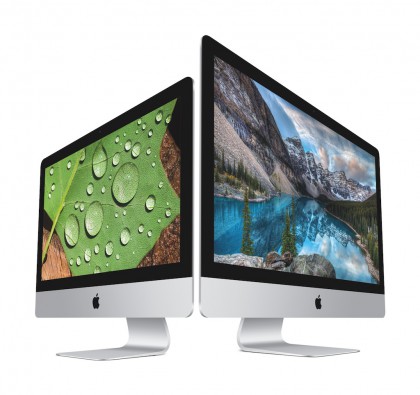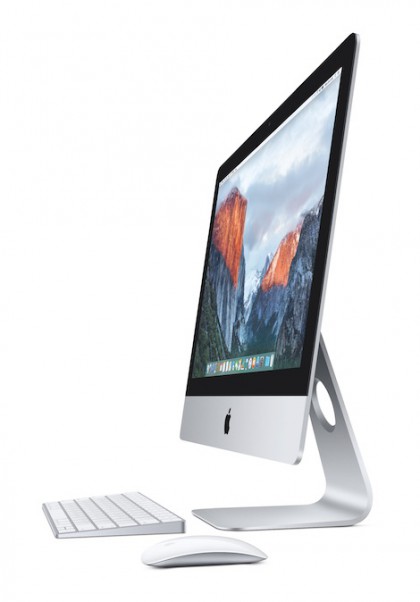Apple just updated the entire iMac line, bringing the option for a Retina display to the 21.5-inch iMac, and a 5K display to every 27-inch model. I had a chance to see the displays last week, and I can say they are spectacular.
I’ve been using the new iMac since last week and will have a review in the next couple of days, but in the meantime, here’s what changed in the iMac world.
The 21.5-inch iMac’s 4K display features 4096 x 2304 resolution and 9.4 million pixels—that’s 4.5 times more than the standard 21.5-inch iMac display. The Retina 5K display on the 27-inch iMac features 14.7 million pixels, 7 times more pixels than an HD display.

The big question I had when I saw the displays was, would I be able to tell the difference. Higher specs are great, but without having some real-world usage, specs don’t mean much. The simple answer is yes you can tell the difference.
With standard sRGB-based displays, many of the colors you see in real life never make it to your screen. Many cameras on the market are able to capture more colors than those screens can actually display. What we see are colors that resemble what the camera saw, but they aren’t exact.
The new Retina 5K and 4K displays feature a wider P3-based color gamut that provides a 25 percent larger color space. This is a significant change and you can see it on the new iMac. Apple showed me pictures in the sRGB range and the same pictures in P3 on the new iMac—the difference was very noticeable.
The 21.5-inch iMac with Retina 4K display has a fifth-generation Intel Core processor and enhanced Intel Iris Pro Graphics. Two Thunderbolt 2 ports now come standard on all iMacs.
The 27-inch iMac with Retina 5K display now comes with sixth-generation Intel Core processors and the latest AMD high-performance graphics.
Magic Accessories
Not only has Apple updated the iMac, but it also updated the accessories to go with the computer. Today, the company introduced the Magic Keyboard, Magic Mouse 2, and Magic Trackpad 2.

There are a lot of changes with the new accessories, but one of the biggest is that they feature rechargeable batteries, eliminating the need for disposable batteries. All three accessories charge via a Lightning cable plugged into your computer.
The Lightning port on Magic Mouse 2 is on the bottom of the device, which led to the obviously question of, how am I going to use the mouse if it runs out of juice? Apple told me that a two minute charge on the mouse will give you a full days use—a two hour charge will give you 30-days use of the mouse.
The ports on Magic Keyboard and Magic Trackpad 2 are always accessible.

The other great thing about the new accessories is that Apple took care of the awkward pairing problems. Plug in the accessory using the Lightning cable and they are automatically paired—when they are unplugged, they remain paired with no issues. That’s the way it should be.
The Magic Keyboard is at a three degree angle, which is about half as much as previous keyboards. I tested it out and it was very comfortable to use. The keys use a scissor mechanism, which is not like the butterfly mechanism introduced in the 12-inch MacBook. However, Apple reduced the key travel from 2.1mm to 1mm with the Magic Keyboard. Key travel on the 12-inch MacBook is 0.5mm.
Magic Trackpad 2 features a 29 percent larger surface and brings Force Touch to the desktop for the first time.
Pricing and availability
The 27-inch comes in three models starting at $1,799, $1,999, and $2,299. The 21.5-inch iMac is available in three models starting at $1,099 and $1,299. The iMac with Retina 4K display starts at $1,499. Every new iMac comes standard with the new Magic Keyboard and Magic Mouse 2—you can order the new Magic Trackpad 2 as an option.
Magic Keyboard is available for $99, Magic Mouse 2 is available $79, and the Magic Trackpad 2 is available starting today for $129.
